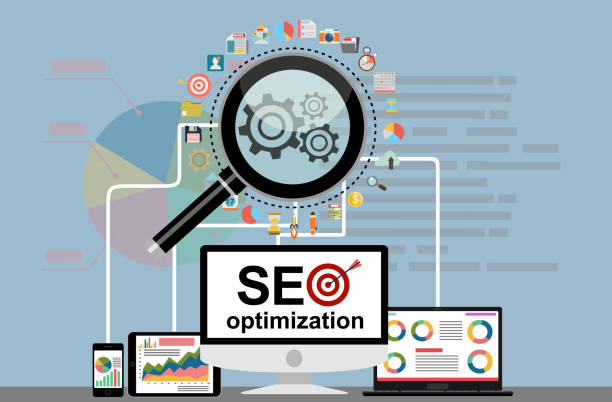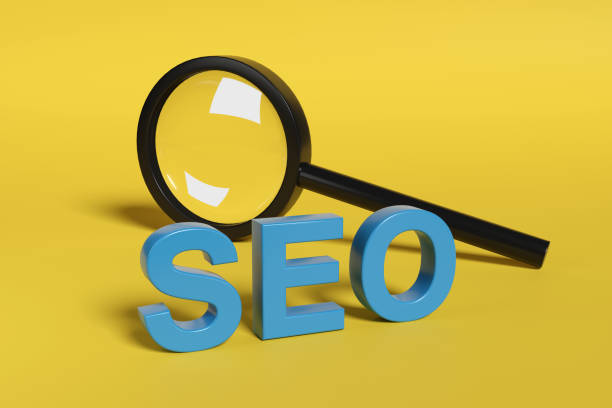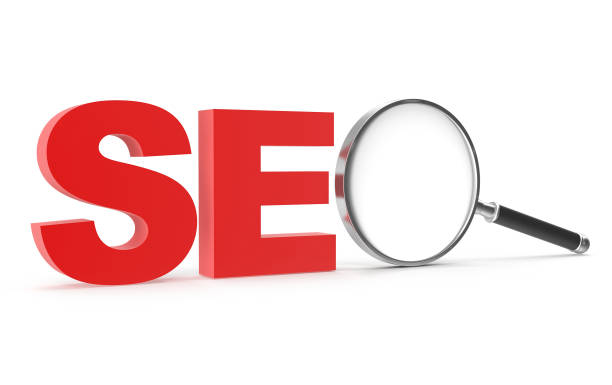What is Technical SEO and why is it important?

What is Technical SEO and why is it important?
Technical SEO is a part of the search engine optimization (SEO) process that focuses on improving the technical aspects of a website so that search engine crawlers, such as Google, can easily crawl and index the site. The main goal of technical SEO is to create an appropriate structure for the website that helps search engines better understand its content and display it to users. This includes optimizing site speed, URL structure, XML sitemap, robots.txt file, mobile compatibility, and other technical aspects.
The importance of technical SEO lies in the fact that without a strong technical foundation, other SEO efforts, such as creating quality content or link building, cannot be fully effective. A technically flawed website may not be properly indexed by search engines or may receive a low ranking. In other words, technical SEO provides the necessary groundwork for a website to be visible in search results. For example, if a page’s loading speed is very low, users quickly abandon it, and this is considered a negative signal by Google, leading to a decrease in site ranking. Therefore, investing in technical SEO not only helps improve user experience but also leads to an increase in organic traffic and, consequently, business growth. Given the complex algorithms of Google and other search engines, technical SEO has become a necessity for any website that wants to compete in the online world. For more information on SEO, you can visit the SEO Example website.
Does your company’s website create a professional and lasting first impression in the minds of potential customers? Rasaweb, with its professional corporate website design, not only represents your brand’s credibility but also opens a path for your business growth.
✅ Create a powerful and reliable brand image
✅ Attract target customers and increase sales
⚡ Get free consultation
Page Speed Optimization

Page Speed Optimization
Website page loading speed is one of the vital factors in technical SEO. Users expect web pages to load quickly, and delays in this area can lead to site abandonment and reduced conversion rates. Search engines also view site speed as an important ranking factor.
There are various methods for optimizing site speed. Image optimization, code compression (CSS, JavaScript, HTML), using a CDN (Content Delivery Network), enabling browser caching, and reducing the number of HTTP requests are among these methods. Image optimization includes reducing image size without quality loss and using appropriate formats like WebP. Code compression reduces file sizes and increases loading speed by removing unnecessary spaces and characters. Using a CDN helps distribute site content across various servers worldwide, allowing users to receive content from the nearest server and increasing loading speed. Tools like Google PageSpeed Insights and GTmetrix can help you evaluate your site’s speed and identify related issues. By resolving these issues, you can improve user experience and increase your site’s ranking in search results. To get started, you can use Google PageSpeed Insights. Also, choosing a suitable high-speed hosting provider significantly impacts site speed.
URL Structure and Its Importance in SEO

URL Structure and Its Importance in SEO
URL structure is an important aspect of technical SEO that greatly impacts the crawlability and understanding of page content by search engines. Clear, concise, and content-relevant URLs help search engines better identify the page’s topic and index it correctly.
The best practice for creating SEO-friendly URLs is to use keywords relevant to the content, avoid special characters and long numbers, and maintain a hierarchical structure. For example, instead of using complex URLs like `www.example.com/page?id=1234`, it is better to use simple and understandable URLs like `www.example.com/blog/seo-technical`. Using hyphens (-) instead of underscores (_) to separate words in URLs is recommended. Additionally, URLs should be short and descriptive so that users can easily understand and remember them. A suitable URL structure not only helps improve SEO but also enhances user experience and increases the likelihood of pages being shared on social media. Furthermore, logical and organized URLs help users easily navigate the site and find their desired content.
Here is a table comparing SEO-friendly and non-SEO-friendly URLs:
| Feature | SEO-Friendly URL | Non-SEO-Friendly URL |
|---|---|---|
| Readability | Easy to read and understand | Difficult and incomprehensible |
| Keywords | Includes relevant keywords | Lacks keywords |
| Length | Short and concise | Long and complex |
| Structure | Logical and hierarchical | Disorganized and unstructured |
| Characters | Uses hyphens to separate words | Uses special characters and many numbers |
XML Sitemap and How to Create It

XML Sitemap and How to Create It
An XML sitemap is a file that introduces all important pages of your website to search engines. This file helps search engine crawlers easily find and index all site pages. An XML sitemap is particularly crucial for large websites with complex structures or newly launched sites with few internal links.
To create an XML sitemap, you can use various online tools. One common method is to use SEO plugins like Yoast SEO or Rank Math for WordPress. These plugins automatically generate and keep the XML sitemap updated. You can also use online tools like XML-Sitemaps.com to create a sitemap. After creating the sitemap, you must submit it to Google Search Console to inform Google of its existence. This ensures that Google correctly indexes all pages of your site and displays them in search results. An XML sitemap not only helps improve SEO but also increases the speed at which new pages are indexed.
Is your current e-commerce website design causing you to lose customers and sales?
Rasaweb is your solution with modern and user-friendly e-commerce website designs!
✅ Significantly increase conversion rates and sales
✅ Create strong branding and gain customer trust
⚡ Get free e-commerce website design consultation from Rasaweb!
Robots.txt File and Controlling Crawler Access

Robots.txt File and Controlling Crawler Access
The `robots.txt` file is a text file that tells search engines which parts of your website should not be crawled and indexed. This file allows you to restrict crawler access to unnecessary pages or duplicate content, thereby preventing wasted crawling resources.
To create a `robots.txt` file, you need to create a text file named `robots.txt` and place it in the root directory of your domain. In this file, you can use directives like `User-agent` and `Disallow` to specify crawler access to different pages. For example, `User-agent: *` means this directive applies to all robots, and `Disallow: /admin/` means robots should not access the `/admin/` folder. The `robots.txt` file helps you prioritize important and valuable content on your site and prevent unnecessary pages from being crawled and indexed. By doing so, you can improve your site’s SEO and avoid potential penalties from duplicate content. For more detailed information on how to use the `robots.txt` file, you can refer to Google’s guide. Site SEO and the correct use of the robots.txt file are very important.
Mobile-Friendly Compatibility and Responsive Design

Mobile-Friendly Compatibility and Responsive Design
Given the increasing use of mobile devices for internet searches, website mobile compatibility has become a crucial factor in SEO. Google introduced the Mobile-First Indexing algorithm in 2015, which means that the mobile version of your website is considered the primary version for indexing and ranking.
To ensure website mobile compatibility, you should use responsive design. Responsive design allows your website to automatically adapt to the screen size of different devices. Additionally, you should use readable fonts, optimized images, and large, tappable buttons to provide a better user experience for mobile users. Tools like Google Mobile-Friendly Test can help you check your website’s mobile compatibility and identify any issues. By optimizing your website for mobile, you can increase your organic traffic and outrank your competitors. Moreover, mobile compatibility helps improve conversion rates and increase user satisfaction.
Indexing and Fixing Index Coverage Errors

Indexing and Fixing Index Coverage Errors
Indexing refers to the process of adding your website’s pages to search engine databases. Pages that are not in Google’s index will not appear in search results. Therefore, ensuring that all important pages of your website are indexed is crucial for SEO.
To check the indexing status of your site, you can use the Index Coverage tool in Google Search Console. This tool shows you how many pages of your site have been indexed, how many pages have encountered errors, and how many pages have been removed. Indexing errors can include 404 errors (page not found), 5xx errors (server errors), and errors related to the `robots.txt` file. To fix these errors, you must first identify their cause and then take the necessary actions. For example, if a page encounters a 404 error, you should ensure that the page URL is correct and the page is accessible. If a page has not been indexed due to `robots.txt` directives, you should review the `robots.txt` file directives and change them if necessary. By fixing indexing errors and ensuring that all important pages are indexed, you can increase your website’s visibility in search results. You can also use the Fetch as Google feature in Search Console to request faster indexing of new pages. Use Google Search Console to check your site’s links and indexing.
| Error Type | Description | Solution |
|---|---|---|
| 404 (Not Found) | Page not found | Check URL and ensure page existence, create 301 redirect if page is deleted |
| 5xx (Server Error) | Server error | Check server settings, contact hosting support |
| Robots.txt Blocked | Page blocked by robots.txt | Check robots.txt file and remove or modify blocking directives |
| Crawled – Currently not indexed | Page crawled but not yet indexed | Request indexing via Google Search Console, improve content quality |
Implementing Structured Data Markup

Implementing Structured Data Markup
Structured data are codes that help search engines better understand the content of your website pages. By using structured data, you can provide information such as product name, price, rating, author, publication date, etc., to search engines. This information helps search engines display richer search results (Rich Snippets), which can lead to increased click-through rates (CTR) and organic traffic.
To implement structured data, you can use various formats such as JSON-LD, Microdata, and RDFa. JSON-LD is known as Google’s recommended format and is relatively easy to implement. To check the validity of your structured data, you can use Google’s Rich Results Test tool. This tool shows you whether your structured data has been implemented correctly and whether it can be displayed in rich search results. Using structured data not only helps improve SEO but also helps increase conversion rates and enhance user experience. For example, if you have an online store, you can use structured data to display product information, price, and ratings in search results, which can attract users’ attention and encourage them to click on your link. Improve your site’s SEO with these techniques.
Did you know that 94% of the first impression of a company is related to its website design?
Rasaweb, by providing professional corporate website design services, helps you create the best first impression.
✅ Create a professional and reliable image of your brand
✅ Easier attraction of potential customers and improvement of online position
⚡ Get free corporate website design consultation
Internal Linking and Improving Site Structure

Internal Linking and Improving Site Structure
Internal linking refers to the process of creating links between different pages of your website. Internal links help search engines better understand your site’s structure and identify important pages. Additionally, internal links help users easily navigate the site and find relevant content.
To optimize internal linking, you should use anchor texts relevant to the destination page’s content. Anchor texts are words used as links and should accurately describe the content of the destination page. Additionally, you should strategically place internal links throughout your site so that users can easily access important pages. Avoid creating too many unnecessary links, as this can harm user experience. Internal linking not only helps improve SEO but also helps increase user dwell time on the site and reduce the bounce rate. By creating an organized site structure and strong internal linking, you can show search engines and users that your site is a valuable and relevant source of information. Improve your internal SEO with proper link building.
Monitoring and Measuring Technical SEO Results

Monitoring and Measuring Technical SEO Results
After implementing technical SEO, it is important to regularly monitor and measure your results to evaluate the effectiveness of your efforts and make necessary changes if needed. Various tools are available for monitoring technical SEO results, including Google Search Console, Google Analytics, and SEO tools like SEMrush and Ahrefs.
Using Google Search Console, you can view information such as clicks, impressions, average ranking, and indexing errors. With Google Analytics, you can observe data like organic traffic, bounce rate, and user dwell time on the site. By utilizing this information, you can identify the strengths and weaknesses of your technical SEO and refine your strategies. For instance, if you notice that your page loading speed is low, you can take necessary steps to optimize site speed. If you find that your bounce rate is high, you can improve your page content and optimize internal linking. Monitoring and measuring technical SEO results is an ongoing process and should be done regularly to achieve desired outcomes. Ultimately, SEO is a continuous process that requires sustained effort and follow-up.
Frequently Asked Questions
| Question | Answer |
|---|---|
| What is SEO? | SEO, or Search Engine Optimization, is the process of increasing the quality and quantity of website traffic by improving the site’s ranking in natural (organic) search engine results like Google. |
| What are the main types of SEO? | SEO is divided into three main categories: On-Page SEO, Off-Page SEO, and Technical SEO. |
| What does On-Page SEO include? | On-Page SEO involves optimizing elements within the website, such as keywords, Title Tags, Meta Descriptions, content, URL structure, images, and internal links. |
| What is Off-Page SEO? | Off-Page SEO refers to activities outside the website that help improve its ranking, such as Backlink Building, social media marketing, and Brand Mentions. |
| What is Technical SEO? | Technical SEO focuses on optimizing the technical aspects of a website to help it be better crawled and indexed by search engines. This includes site speed, mobile-friendliness, site structure, sitemaps, and the Robots.txt file. |
| What role do Keywords play in SEO? | Keywords are phrases that users enter into search engines. Proper and targeted use of relevant keywords in content and site elements helps search engines understand your page’s topic and display it for relevant searches. |
| What is a Backlink and why is it important? | A backlink, or inbound link, is a link from one website to another. Backlinks act as a “vote of confidence” from other sites for search engines and play a significant role in site credibility and ranking, especially if they are from reputable sites. |
| What is the impact of quality content on SEO? | High-quality, relevant, comprehensive, and unique content not only attracts and retains users but also shows search engines that your page is valuable. This helps improve ranking, reduce Bounce Rate, and increase user dwell time on the site. |
| Why is site loading speed important for SEO? | Site loading speed is an important ranking factor for Google. Faster sites provide a better user experience, have lower bounce rates, and are preferred by search engines. |
| Is SEO a one-time process? | No, SEO is a continuous and long-term process. Search engine algorithms are constantly changing, competition is increasing, and site content also needs updating. Therefore, SEO requires continuous monitoring, analysis, and optimization. |
And other services of Rasaweb Advertising Agency in the field of advertising
Smart Social Media: A novel service to increase user engagement through SEO-driven content strategy.
Smart Content Strategy: Designed for businesses seeking user interaction through engaging UI design.
Smart Digital Advertising: Revolutionize digital branding with the help of SEO-driven content strategy.
Smart Marketplace: A fast and efficient solution for customer acquisition focusing on engaging UI design.
Smart Advertorial: An innovative platform to improve website traffic increase with marketing automation.
And over hundreds of other services in the field of internet advertising, advertising consultation, and organizational solutions.
Internet Advertising | Advertising Strategy | Advertorial
Resources
What is Technical SEO and what is its importance?
Comprehensive Guide to Technical SEO
What is Technical SEO?
Technical SEO Guide
? Are you ready to transform your business in the digital world? Rasaweb Afarin, with expertise in SEO-optimized website design and providing comprehensive digital marketing solutions, is your bridge to endless successes.
📍 Tehran, Mirdamad Street, next to Bank Markazi, Southern Kazeroon Alley, Ramin Alley, P.O. Box 6



